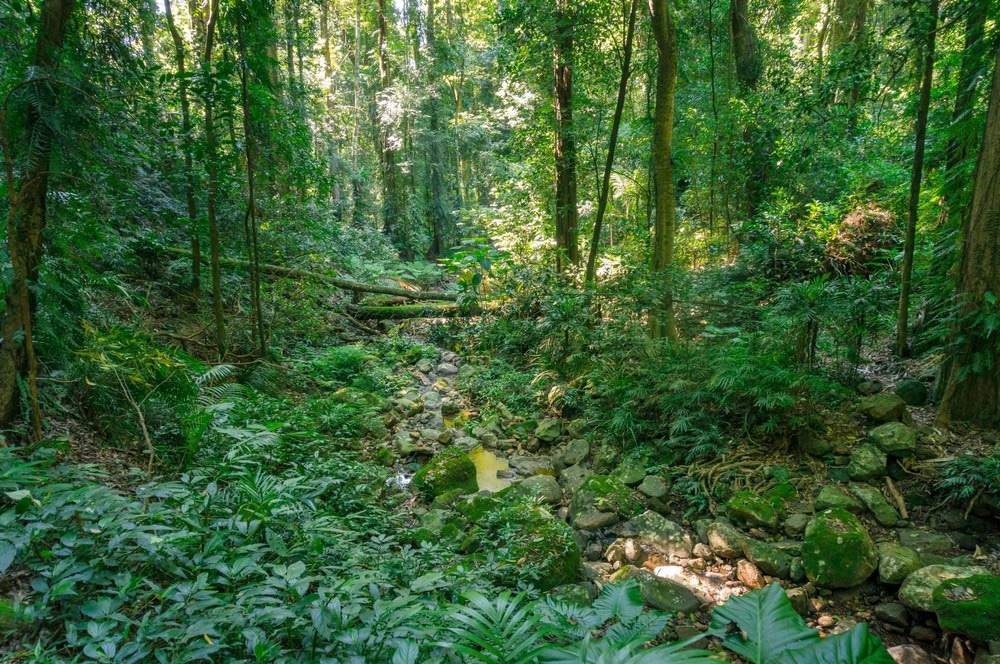Reviewed by Alex SmithNov 11 2022
The most significant direct driver of wildlife decline throughout the world is the change of natural forests and grasslands to intensive livestock and agriculture. A new study has highlighted what is pushing the developing biodiversity crisis, discovering that land-use change resulted in the greatest effect over the past few years, tracked by the exploitation of wildlife via logging, fishing, and hunting, with pollution ranked third.

Image Credit: Olga Kashubin/Shutterstock.com
The research team discovered that land use change is the primary reason, followed by the direct exploitation of pollution and wildlife. What is possibly most shocking is that climate change has been only the fourth biggest driver of recent biodiversity loss that happens on land.
Professor Andy Purvis is a leader of the study at the Natural History Museum, whose work concentrates on biodiversity, and co-author of this new study reported in the journal Science Advances.
Biodiversity is declining rapidly. A million species of animal and plant are threatened with extinction, while ecosystems worldwide are changing away from their natural condition which means that they may be less likely to meet humanity's needs.
Andy Purvis, Professor, National History Museum
Purvis added, “If we're going to be able to turn these recent declines round - to 'bend the curve' of biodiversity loss - we first need to know what the main causes have been. This study highlights the needs to find solutions to the planetary emergency that work for nature as well as for climate.”
The new study shows that addressing climate change on its own will not be sufficient to hinder the catastrophic fall of the world’s biodiversity, and also with it, the future.
What is the Biodiversity Crisis?
The planet is at a significant point in its 4.6-billion-year history. With the release of carbon emissions still showing few signs of halting, the time to reverse the negative consequences on the environment is running out.
At present, the climate crisis is being discussed at the COP27 climate talks occurring in Egypt, where policymakers, world leaders, researchers, and youth activists have gathered.
The reasons and solutions to the climate crisis are widely known: quick reductions in the use of fossil fuels and an increase in the shift to renewable forms of energy. This must happen while also offering support to nations already feeling the extreme impacts of climate change.
On the other side of the coin, the biodiversity crisis is present. Since pollution has been continuously released into the environment through anthropogenic activities, the planet’s animals and plants have also been taking significant damage.
Every species plays a significant role in retaining the complicated systems that are responsible for the Earth to function. This consists of the production of clean water, the air that humans breathe, the food that one eats, and also mental and physical wellbeing.
Greenhouse gasses have been the primary cause of the climate crisis for the past few years. However, identifying what is forcing the biodiversity crisis is equally significant.
We found that the most important direct driver of biodiversity change worldwide over recent decades has been land and sea-use change, with direct exploitation of plants and animals coming second. Climate change was only fourth, after pollution but ahead of invasive alien species, though it is important to note that it was ranked second in the oceans.
Andy Purvis, Professor, National History Museum
Purvis added, “Oceans have a different ranking to land and freshwater, with direct exploitation, mostly from fishing, coming first.”
However, what is happening in the oceans might offer a glance at what the future will be like on land. While for land-based surroundings, climate change was only the fourth largest driver, Andy guesses that it will ascend the rankings as the full effect of the climate crisis turns out to be highly apparent in the future.
What can be Done to Tackle the Biodiversity Crisis?
One of the primary problems is that the safety and preservation of the natural world have currently taken a back seat. This is likely due to the fact that humans are visualized separately from nature.
The biodiversity crisis has to be taken seriously. Apart from things we mine, like fossil fuels, all of our supply chains start in ecological systems. We all absolutely depend on these systems continuing to work reliably.
Andy Purvis, Professor, National History Museum
Purvis added, “There is not yet enough recognition that economies can't grow sustainably by running nature down. And denigrating people concerned about the future of the natural world as 'eco-zealots' does nobody any good.”
Andy claims that we needs to be working towards a more holistic method that will handle the climate and the biodiversity crisis simultaneously, to the profit of both. This includes policies like the 30 × 30 campaign, which aims to safeguard 30% of the land and seas by 2030.
Andy added, “Climate change and biodiversity loss have been tackled largely separately, by different policies that haven't always considered the other problem. For example, biofuels are proposed as one way to get to net zero, but the expansion of plantations into natural forest that could result would be terrible for nature.”
“That situation is improving. Last year's climate conference in Glasgow was the first time that nature had been really brought into those discussions - but there's more to be done,” stated Andy
Andy said, “I'd love for 'nature-positive' to get into the public consciousness as much as 'net zero' has. If future generations are going to have the same birthright we had of a liveable, supportive planet, then all parts of society will have to transition as quickly as possible to being both net zero and nature-positive.”
Journal Reference:
Jaureguiberry, P., et al. (2022) The direct drivers of recent global anthropogenic biodiversity loss. Science Advances. doi.org/10.1126/sciadv.abm9982.